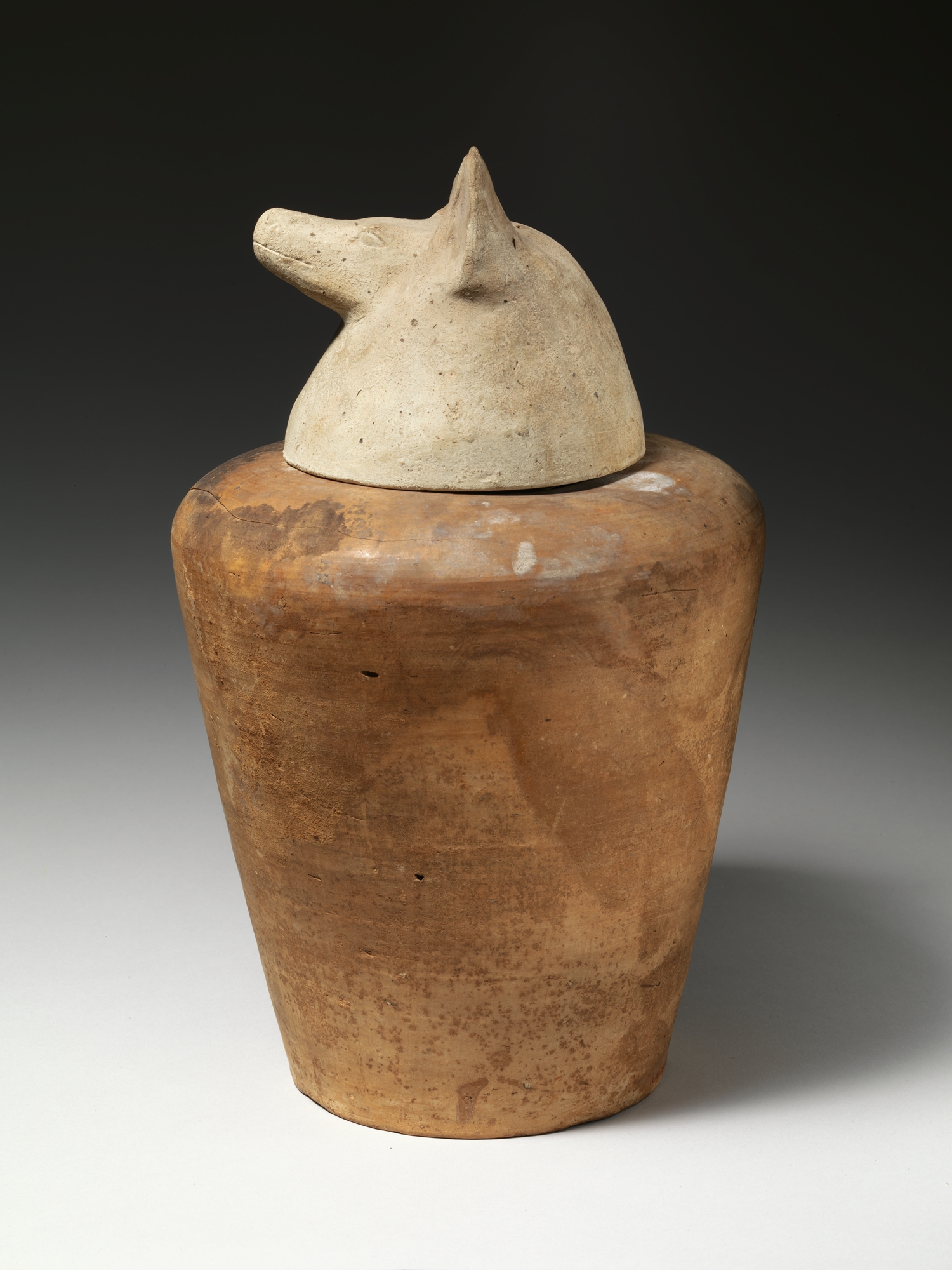Canopic jar of Tetinakht: Duamutef
New Kingdom
Three canopic jars (12.181.253a–c) were found in a tomb dating to the beginning of Dynasty 18. Two of the lids are shaped like animal heads and the third has a human head. This jar, with the jackal-headed lid, represent the deity Duamutef, protector of the stomach. Another jar, with a falcon-headed lid, represents Qebehsenuef, protector of the intestines. The third jar has a lid with a human head and represents Imsety, protector of the liver. These are three of the Four Sons of Horus. Missing from the set is the fourth jar which probably had a baboon-headed lid representing Hapy, protector of the lungs.
These are the earliest datable examples of animal-headed lids on canopic jars, a style that did not become common until later in the New Kingdom. In earlier periods, the lids were different. Old Kingdom canopic jars were often covered with simple disk-shaped lids (see 14.7.16–.19), and from the Middle Kingdom to the early 18th Dynasty, they were usually covered with human-headed lids (see 11.150.17a–d).
For a complete set of animal-headed canopic jars, see 12.183.1a–d.
Due to rights restrictions, this image cannot be enlarged, viewed at full screen, or downloaded.
This artwork is meant to be viewed from right to left. Scroll left to view more.




